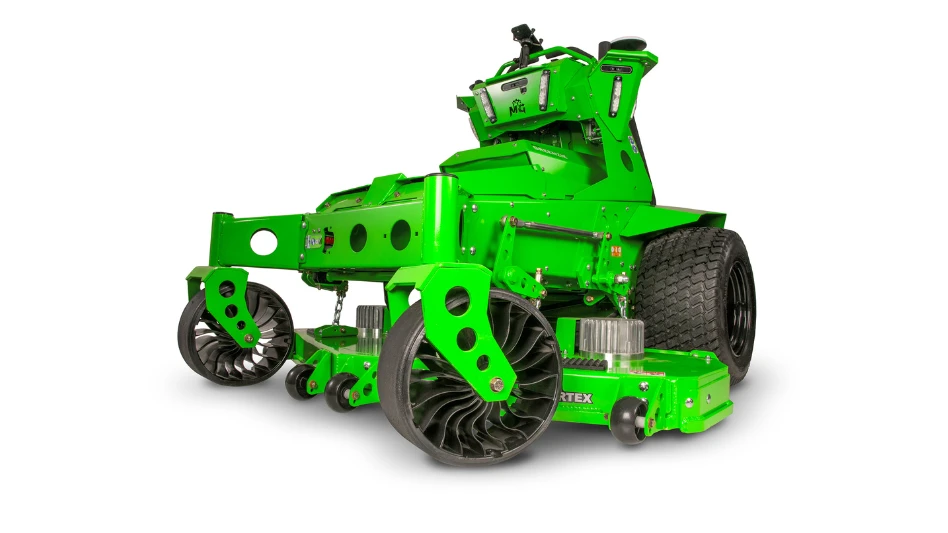There are two approaches to acquiring the right equipment balance for grounds maintenance – 1) Purchasing specialized equipment for every aspect of work or 2) Selecting a grounds maintenance system that can be adapted for many tasks.
With so many styles and brands of grounds maintenance equipment from which to choose, selecting the right combination of equipment can be challenging. Whether you buy individual, task-specific equipment or go with a grounds maintenance system, the investment can be significant. So to truly make an educated decision, first compare a stand-alone snow thrower, a separate dethatcher, an aerator and other specialized equipment with grounds maintenance systems that use attachments.
To compare the two philosophies, add the initial cost of 1) a mower, 2) the separate stand-alone items and 3) the cost of their combined upkeep. Then, 4) subtract the total from the equipment’s earning potential.
Then you must calculate the cost of an equivalent system and the various attachments. Add the cost of 1) the power unit and a cutting deck, 2) the cost of each task-specific attachment you will need, 3) the maintenance costs and 4) subtract that total from the system’s revenue potential and compare the two totals.
When you make an initial cost comparison between a zero-turning radius mower that can accept attachments and a “mower-only” unit, depending on the brands, there may or may not be much difference in price. One recent study compared each mower type’s costs-to-cutting capacity and found the mowers that accepted attachments were actually less expensive to purchase than mower-only units. However, even if there is a slight difference between a unit that can accept attachments and a mower-only unit, that differential can be offset because the attachments are most likely less expensive than stand-alone gear that performs the same function. For instance, the Grasshopper AERA-vator (the 40-inch lists for $2,950) can be less expensive than a walk-behind one, some of which of a comparable width can sell for up to $16,000.
By using a central power unit that operates a cutting deck and attachments, a grounds maintenance system can also be less expensive to maintain. In general, the cost of powered, stand-alone or walk behind implements vs. the PTO-driven Grasshopper implements would cost more than PTO-driven ones by at least the cost of the extra engine. Maintenance costs would be estimated to be more for parts and labor because of working two different engines (Grasshopper’s 4-stroke vs. a 2-stroke walk-behind). That would include keeping more parts in stock to maintain the extra engine.
Here is an example of the difference between separate units and a grounds maintenance system. Scott Brewer, owner, Rotolo Consultants, Jackson, Mississippi, had a contract to clear debris from curbing along a 26-mile stretch of highway in Louisiana. Using four employees, each equipped with a back-pack blower unit, the task regularly took several days to complete. When Brewer switched to a Grasshopper grounds maintenance system equipped with a turbine blower, he discovered the same job could be completed in one-fourth of the time it had taken before using just one-fourth of the number of employees the job previously required. Brewer’s decision reduced the contract’s labor and time costs by a factor of 16, leaving a significantly larger portion of the contract revenue on the bottom line. – Carl Williams
For more information about Grasshopper, visit www.grasshoppermower.com.
es can vary from supplier to supplier.
Get curated news on YOUR industry.
Enter your email to receive our newsletters.
Explore the September 2005 Issue
Check out more from this issue and find your next story to read.
Latest from Lawn & Landscape
- Connect, Control & Conserve with Horizon Technical Services
- Use Horizon's Parts Hotline
- How I built a Top 100 company
- Horizon’s Exclusive TurfGro Fertilizer
- Grow your business with mosquito control
- LandCare adds 2 branches in SoCal, promotes Aleman to branch manager
- Spray them away
- PERC helps debut propane direct-injection fuel system at ACT Expo 2025





